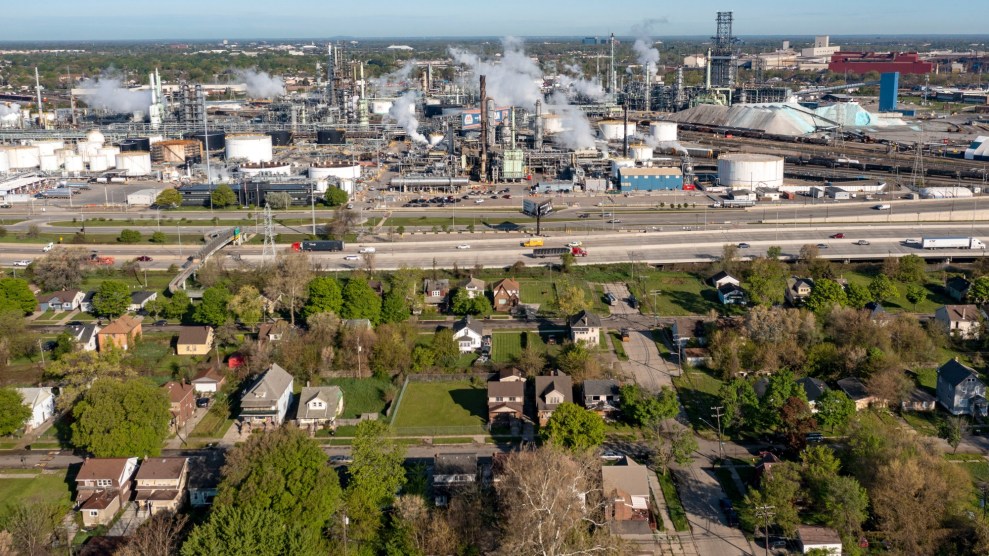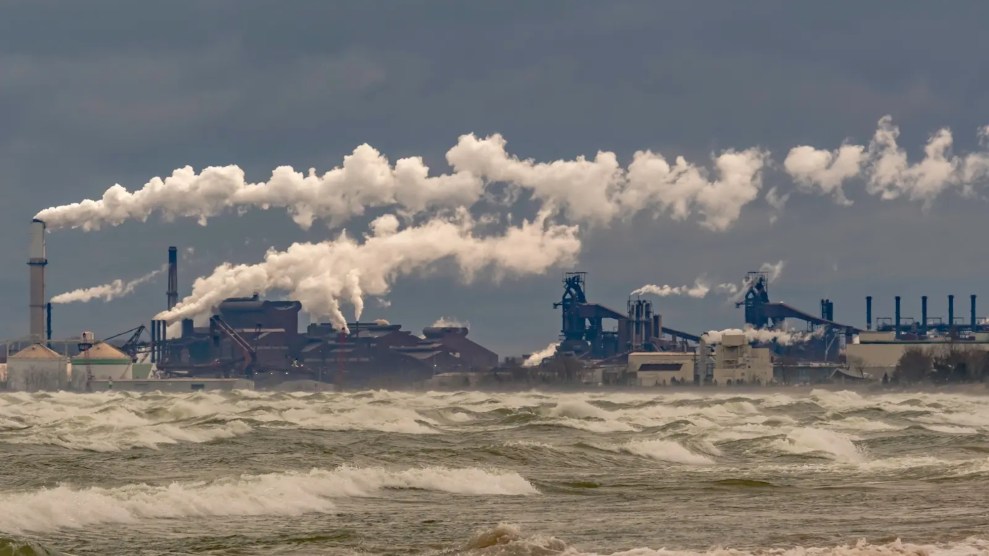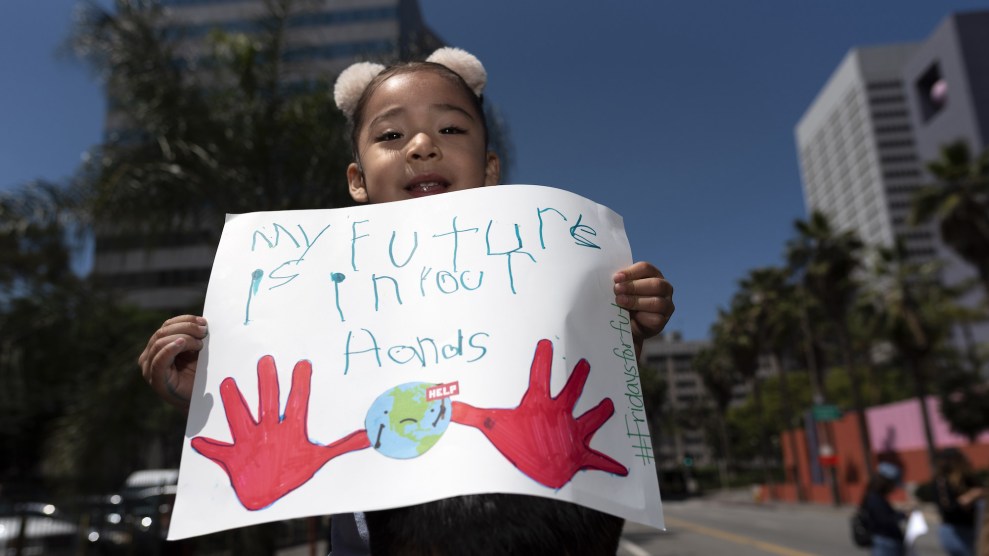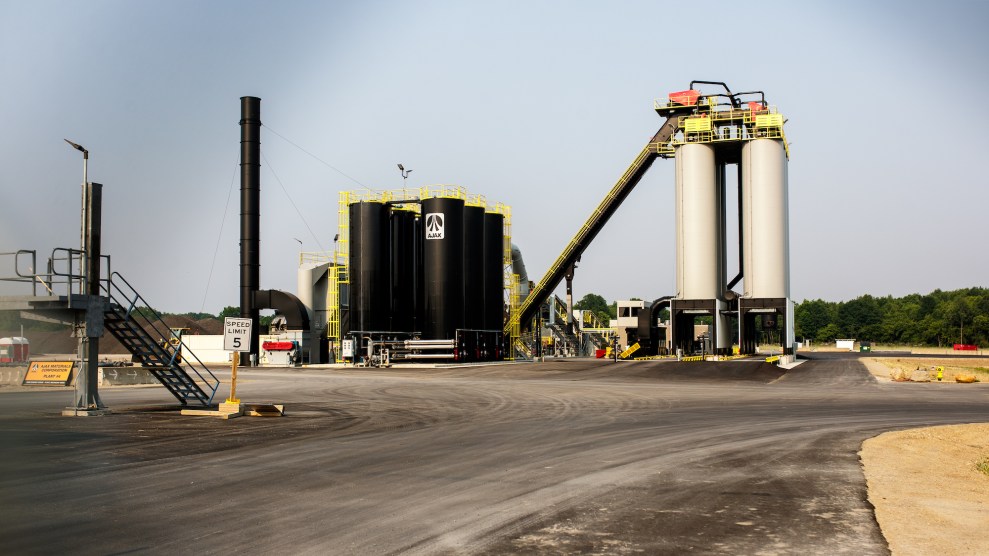
A petroleum refinery in southwest Detroit.Jim West/ ZUMA Press Wire
This story was originally published by Grist and is reproduced here as part of the Climate Desk collaboration.
In a ruling that court observers said was “really extraordinary” and achieved through “a procedural strangeness,” the Supreme Court on Thursday blocked a federal plan to reduce air pollution that blows across state lines.
The 5-4 decision from the court’s conservative justices halts, for now, the Environmental Protection Agency’s “Good Neighbor” rule and its stringent smokestack emissions requirements on power plants and other industrial sources. The court ruled that the EPA failed to “reasonably explain” its policy and placed it on hold pending the outcome of more than a dozen lawsuits.
Environmental advocates said the decision will leave millions of people breathing dirtier air this summer. They also worry that future challenges to federal policies could similarly “short-circuit the normal process of judicial review” by appealing directly to the Supreme Court.
“What this shows me is that this court is no longer neutral in cases involving environmental regulations,” Sam Sankar, senior vice president for programs at Earthjustice, told reporters on Thursday. “It’s actively skeptical of EPA and new environmental regulations.”
The Good Neighbor plan was adopted to ensure compliance with a 2015 update to the Clean Air Act that tightened federal limits on ozone, a harmful pollutant and the primary component of smog. That update triggered a requirement for each state to submit a plan within three years detailing how it would reduce ozone-forming emissions from coal-fired power plants and heavy industry to protect downwind states. The law also required the EPA to craft a plan for states that failed to provide an adequate proposal.
Twenty-one states submitted plans indicating that they would do nothing, while Pennsylvania and Virginia didn’t offer one at all. In March 2023, the EPA issued its own proposal for the 23 states, prompting dozens of lawsuits in federal courts around the country.
EPA data showed the Good Neighbor rule was reducing ozone-forming emissions by 18 percent.
Ohio, Indiana, and Virginia, joined by pipeline company Kinder Morgan, US Steel, and others, in challenging the plan, argued that the EPA’s approach failed to consider the impact of a federal plan on each state. They also alleged that the steps needed to implement it could create economic and operational harm even as lower courts decide other lawsuits.
The justices, in a majority opinion written by Justice Neil Gorsuch, agreed. Gorsuch noted that the EPA’s plan to implement pollution reduction requirements regardless of how many states are involved was not “reasonably explained.”
“The government refused to say with certainty that EPA would have reached the same conclusions regardless of which states were included,” he wrote.
But Justice Amy Coney Barrett argued in a strongly worded dissent that the agency “thoroughly explained” its methodology for calculating emissions reduction requirements, which depends not on the number of states included in the plan, but on cost-effective measures that can be achieved at each source of pollution. Barrett also noted that the plaintiffs and the court failed to identify how exactly the rule would differ if the number of states changed.
Sankar, who has for 25 years closely watched the Supreme Court’s decisions on environmental matters, called the ruling “really extraordinary” for two reasons. First, the EPA did in fact explain its reasoning in numerous documents. Second, the case landed on the court’s emergency docket, a lineup that until recently largely was reserved for minor procedural issues typically decided without the justices hearing oral arguments.
“It’s really hard to say that there are any rules that aren’t subject to this kind of attack.”
Zachary Fabish, senior attorney at the Sierra Club, told Grist that by hearing oral arguments and issuing so consequential an opinion on its emergency docket, the Supreme Court has created a kind of “procedural strangeness” in its decision making.
He pointed out that the case had yet to be decided by the US Court of Appeals for the DC Circuit, which will likely rule on the legitimacy of the Good Neighbor plan sometime next year. That means that even before the lower court’s decision, the Supreme Court has already weighed in—but without the benefit of extensive briefings, arguments, and opinions from a lower court, he said.
Today’s ruling suggests future environmental policies could face similar challenges on the emergency docket, said Sankar. “It’s really hard to say that there are any rules that aren’t subject to this kind of attack.”
Clean air advocates highlighted another glaring omission from the court’s opinion: It made no mention of the public health toll of the pollution on downwind states. Ozone forms in high temperatures and sunlight, making summer months particularly conducive to its formation.
As Fabish puts it, “The hotter the summer, the worse the ozone season”—a foreboding sign as much of the country broils under relentless heat. Research has shown that ozone increases the risk of life-threatening conditions like asthma attacks, especially among children, older adults, people who work outside, and people with respiratory and other illnesses.
Last summer, data collected by the EPA showed that from May to September, the Good Neighbor rule—which at the time was in effect in 10 states, including Illinois, New York, and Ohio—successfully drove down ozone-forming emissions by 18 percent. “Staying this rule threatens the progress that happened last ozone season when the rule was partially in effect,” Fabish said.












